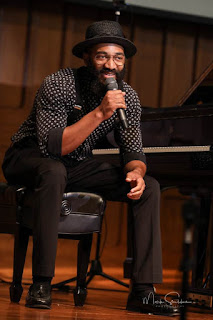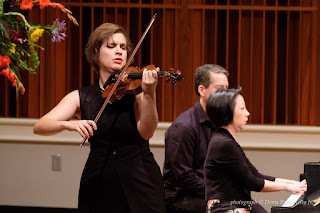Kenny Banks Jr. launches Premiere Series of American Pianists Awards

Kenny Banks Jr. works the room from the bench. The jazz phase of the American Pianists Awards has got into a judgment phase after its recent Jazz Pizzazz introduction. A three-man jury (Phil DeGreg, Matthew Fries, and Scott Routenberg) began its work Saturday night. Their critiques will feed into overall evaluation of the competitors as the contest reaches its April culmination. Kenny Banks Jr. was the first of five finalists who will be heard in monthly outings through February at the Jazz Kitchen , accompanied by bassist Nick Tucker and drummer Kenny Phelps. Constantly relating to the capacity crowd and getting positive feedback from it, the 30-year-old Atlanta resident displayed his command of the full piano keyboard, focusing on a penchant for instrumental color. He also showed an affinity for medleys and original pieces that took the shape of tone poems for piano trio. He brought his assisting musicians — local stars in their own right — with him so faithfully throughout












